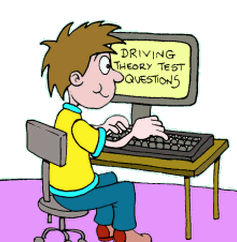What details to get at an accident
When you swap details with a driver, here are the things that you should be sure to obtain from the other driver:
You need to of course get their name, their address and a contact telephone number: either landline or mobile
You should also be sure to note down the registration number for their car, and double check that you have written it down right as this is key. Also write down the make of the car, and if you like the colour too.
You need details of their insurance, and whether the driver owns that vehicle or not, because the person driving it may not always be the actual owner of the vehicle.
Other things to make notes on vary depending on what the accident is, who it involved, and the severity of the incident.
Note down any damage that occurred to either vehicle, and of any injuries to people. In the case of damage to vehicles, many people now who all have cameras on their phone will take a photo of the scene or of any damage, and you might like to do this to have a visual record of what occurred which can also act to jog your memory in future.
Note down the prevailing conditions - was it wet, windy, dark, dry, sunny, thunder and lighting? Were there police at the scene - if so what was their ID number?
With regard to the other vehicles - how were they behaving? Was a car speeding, was it trying to jump the lights, did it have the wrong indicator on or indeed no indicator at all - was it in poor condition and perhaps not road safe?
By noting down all these details at least you will have a thorough record of the accident should it be necessary for insurance or even police enquiries or court cases.
Related Articles...
Driving Theory Centres
Finding the nearest driving theory centre to you is easy as the government makes this information available to you online.
There is a website that enables you to find the nearest driving...
Your legal obligations as a driver
There are some basics that everyone knows when it comes to being able to behind the wheel of a vehicle. These are of course meeting the legal eyesight requirements, being older than the minimum age...
Some common engine faults
It is beyond the scope of the articles here to go into detail about how the engine works and what the various parts of it are. For the theory test you won't need to know a great detail about the...
Tips on driving in the country
Driving in the country can be quite a different experience to driving around towns and on motorways.
Firstly, depending where you are, the road quality can be very variable and bumpy and...
What to do when you sell a vehicle
When you sell a vehicle, there are some things that you have to do straight away. As soon as the vehicle is sold you have to tell the DVLA, which stands for the Driver and Vehicle Licensing Agency,...
Types of brakes and braking system
The brakes on your car are one of the most important elements of the car, and when you learn the ABC of accelerator, brake and clutch you realise if you hadn't already how to standardly operate the...
Ways to drive in a greener way
There are several methods that you can employ to ensure that you drive in a green way. The advantages of this are that you consume less fuel pro rata so it is good for your bank balance too, and...
Nervous Driver Tips
Many people who learn to drive have a combination of nerves and excitement. Even if someone says they have no nerves and are perfectly confident when it comes to driving, the first time you get...
The New Drivers Act
The New Drivers Act is legislation that applies to those who have just passed their test and are categorised as new drivers, which in this legal definition refers to the first two years of passing...
Staying calm in your driving test
There is no doubt that many people get extremely nervous before the driving practical test, and whilst this can be frustrating or disconcerting, it is not necessarily a bad thing. Many people...
Back to home page of driving theory test questions

